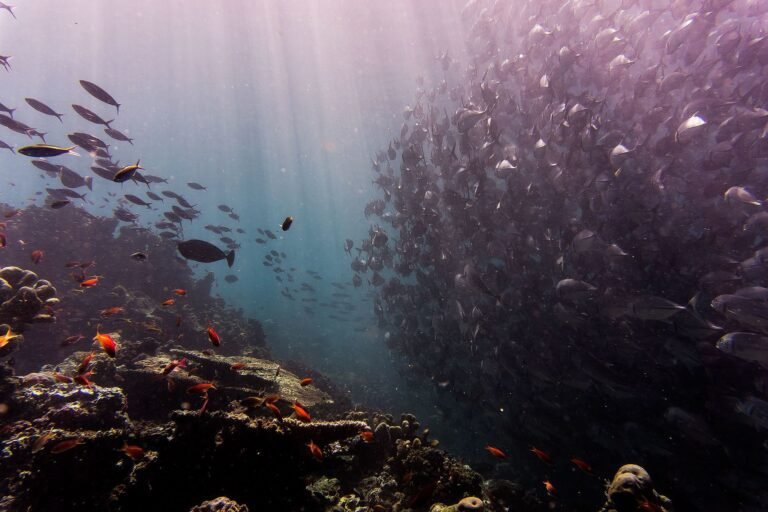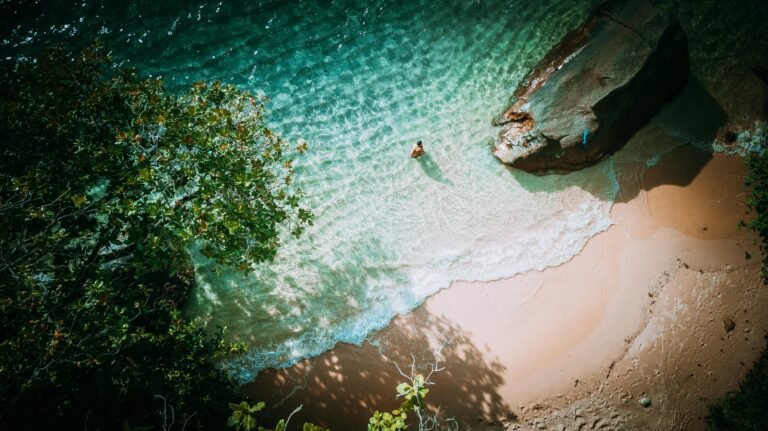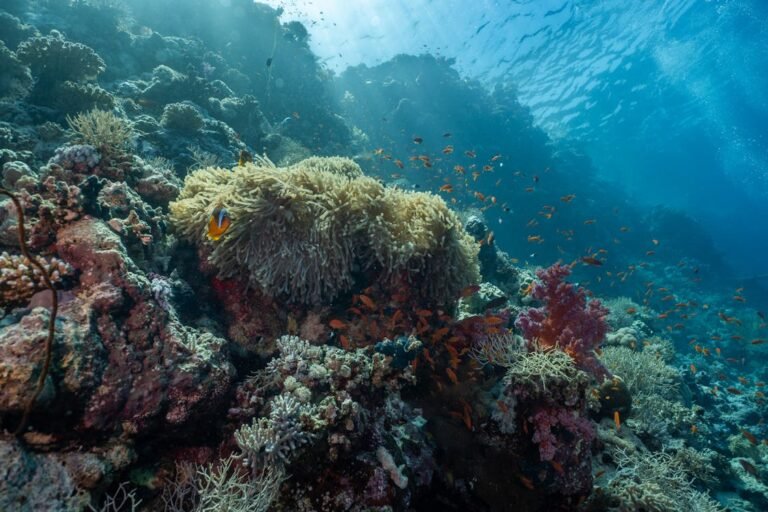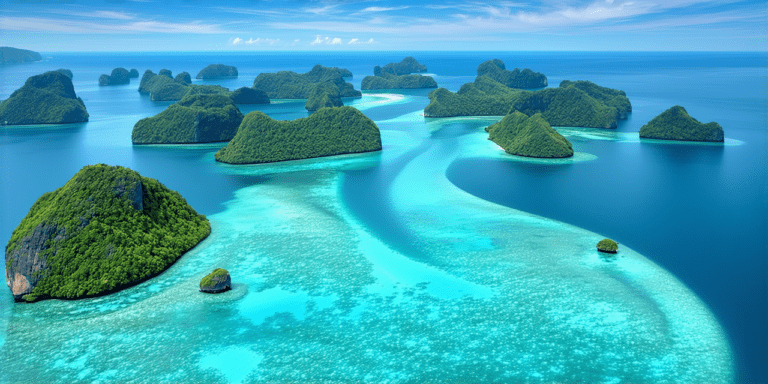Reef Ecosystem Guide for Divers: Understanding Marine Wonders

Reef ecosystems are some of the most fascinating and essential habitats on Earth. They’re not just beautiful—they’re lifelines for countless marine species and a source of wonder for those who explore them.
For divers, these ecosystems offer a chance to witness the underwater world in all its glory. But with this privilege comes responsibility.
Reefs are delicate, and human activity poses a growing threat to their survival. As explorers, it’s on us to tread carefully and ensure we’re not harming the very places we’re drawn to.
This guide explores the magic of reef ecosystems, showcasing the marine life they support, offering tips for responsible diving, and explaining why protecting them matters.
Whether you’re an experienced diver or just starting out, knowing how these ecosystems work will not only make your adventure more meaningful but also help preserve them for generations to come.
What Are Reef Ecosystems?
Reef ecosystems are complex and vibrant underwater environments, often called the “rainforests of the sea” for their incredible diversity and importance.
These ecosystems are built on coral, rock, or even artificial structures and play a key role in supporting marine life.
Definition and Role in Marine Ecosystems
Reef ecosystems are habitats based on living or non-living foundations, usually found in shallow, sunny waters. They provide shelter, food, and breeding spaces for a huge variety of marine species.
But reefs don’t just help sea life. They act as natural shields for coastlines, reducing wave impacts and protecting communities from storms.
Key Types of Reefs
Coral Reefs
- Coral reefs are the most famous type. Built by tiny coral polyps over thousands of years, they are among the most diverse ecosystems on Earth. Coral reefs come in different forms, including fringing reefs, barrier reefs, and atolls.
Rocky Reefs
- Found in cooler waters, these reefs are made of natural rock formations. They’re often covered with algae, kelp, and sponges, creating a unique habitat for marine species that thrive in colder climates.
Artificial Reefs
- These are human-made, like sunken ships or purpose-built reef structures. They provide additional habitats for marine life and help ease the strain on natural reefs.
Why Reefs Matter for Biodiversity and Coastal Protection
Reefs are small in size compared to the ocean—less than 1% of the seafloor—but they support over 25% of all marine species. They are essential for feeding, breeding, and sheltering countless organisms.
Beyond supporting marine life, reefs act as natural wave barriers, protecting coastlines from erosion and storm damage.
This dual role makes them critical not just for underwater ecosystems but for people living near the coast too. Without healthy reefs, marine biodiversity would suffer, and coastal communities would be far more vulnerable.
Marine Life Found in Reef Ecosystems

Reef ecosystems are alive with an incredible mix of marine species, making them some of the most diverse places on Earth.
From tiny, brightly colored fish to massive predators, these habitats are a wonder to explore. For divers, they offer unforgettable moments of discovery and connection with nature.
Overview of Diverse Marine Species
Reefs are home to a web of life, where every creature plays a role in keeping the ecosystem balanced.
Corals, often mistaken for plants, are the builders of these habitats, creating the foundation that supports countless species.
Small herbivores like parrotfish and damselfish keep algae growth in check, while predators such as sharks ensure the balance by managing fish populations.
Iconic Species to Spot While Diving
Fish
- Clownfish: These charming little fish are famous for their partnership with sea anemones, which protect them from predators.
- Angelfish: Known for their striking colors and patterns, angelfish add a splash of beauty to the reef as they weave through the corals.
Corals
- Brain Coral: Recognizable by its grooved, brain-like surface, this coral is key to the reef’s structure.
- Fan Coral: With their elegant, fan-shaped branches, these corals filter tiny plankton from ocean currents.
Other Marine Life
- Sea Turtles: These gentle reptiles gracefully navigate the reef, feeding on seagrass and algae.
- Rays: From the spotted eagle ray to the majestic manta ray, their smooth, gliding movements are mesmerizing to watch.
The Unique Interdependence of Reef Life
One of the most remarkable things about reef ecosystems is how interconnected everything is. The survival of one species often depends on another.
For example, cleaner shrimp and wrasse act as “janitors,” picking parasites off larger fish. Both sides benefit, showing the delicate balance that keeps the reef thriving.
This web of relationships is part of what makes reefs so magical. Each species has a role, and together they create a living masterpiece that’s as functional as it is beautiful.
Tips for Responsible Diving in Reef Ecosystems

Diving in reef ecosystems is a privilege, but it comes with a responsibility to protect these fragile habitats. Careless diving can harm reefs, which take years to recover from even small damage.
By diving responsibly, you can enjoy these underwater wonders while helping to preserve them for the future.
Key Practices to Protect Reefs
Master Your Buoyancy
- Keeping your buoyancy under control is one of the best ways to protect reefs. Accidental contact with corals can break them, and since corals grow very slowly—just a few millimeters per year—damage can be permanent.
- Practice using your buoyancy control device (BCD) in areas away from sensitive reefs.
- Maintain enough distance from the reef to avoid touching it, even accidentally.
- For a detailed guide check out : How to Perfect Beginner Scuba Buoyancy: A Complete Guide
Use Reef-Safe Sunscreen
- Many sunscreens contain chemicals like oxybenzone and octinoxate that harm corals. Switch to mineral-based reef-safe sunscreen to protect your skin without hurting marine life.
- Even better, wear UV-protective clothing like rash guards or wetsuits to reduce the need for sunscreen altogether.
Avoid Touching or Feeding Marine Life
- Touching marine creatures can stress them or interfere with their natural behavior. Feeding them, even if it seems harmless, can create dependency and disrupt the balance of the ecosystem.
- Enjoy watching marine life from a safe distance. Let them carry on their natural behaviors without interference.
Dispose of Waste Properly
- Plastic and other waste are a major threat to marine ecosystems. Always make sure your trash is disposed of responsibly.
- If possible, join cleanup dives to help remove debris from the ocean.
How Responsible Diving Helps Reefs
Every small action you take as a diver makes a big difference to the health of the reef. When you minimize disturbances, marine life thrives naturally.
Setting a good example also inspires other divers to adopt better habits, creating a ripple effect of positive change.
Small Steps, Big Impact
- Avoid anchoring boats on reefs; use designated mooring buoys instead.
- Choose eco-certified dive operators who prioritize reef conservation.
- Share tips about responsible diving with others to spread awareness.
By making these small, thoughtful changes, you’re helping to ensure that reefs remain vibrant and full of life.
Future generations deserve to experience the same breathtaking beauty, and it starts with how we dive today.
Why Protecting Reef Ecosystems Matters

Reef ecosystems are essential—not just for marine life but also for people and the planet. These vibrant habitats provide food, livelihoods, and natural protection for coastal communities.
But they’re under threat, and their survival depends on our actions. Protecting reefs isn’t just about saving corals and fish; it’s about safeguarding a critical part of Earth’s ecosystem.
Threats to Reefs
Climate Change
- Rising ocean temperatures cause coral bleaching, where stressed corals lose the algae (zooxanthellae) that provide them with energy. If this stress continues, corals die, leaving behind lifeless, white skeletons.
- Ocean acidification, driven by CO₂ absorption, weakens coral skeletons, making reefs more fragile and prone to damage.
Pollution
- Runoff from farms introduces harmful chemicals like pesticides and fertilizers into the water, disrupting marine life and triggering algae overgrowth that can smother reefs.
- Plastic waste is another major issue. It can trap or injure marine creatures and often gets mistaken for food, leading to severe health problems or death.
Overfishing
- Removing too many key species from reef ecosystems upsets the delicate predator-prey balance. This can lead to overpopulation of some species and the decline of others, damaging the entire ecosystem.
- Destructive fishing methods like dynamite fishing not only kill fish but also destroy coral structures, leaving reefs in ruins.
The Role of Divers in Conservation Efforts
Divers are uniquely positioned to help protect reefs. As firsthand witnesses to their beauty and fragility, divers can take steps to raise awareness and drive change:
Educate Others
- Share your diving experiences to highlight why reefs matter and how they’re under threat.
Volunteer
- Join reef restoration projects, such as coral planting or cleanup dives, to help repair damage.
Advocate
- Support policies and initiatives that address climate change, curb pollution, and promote sustainable fishing.
Easy Ways to Contribute
Protecting reefs doesn’t require grand gestures. Small, simple actions add up:
Beach Cleanups
- Collect trash before it washes into the ocean. Even a few minutes can make a difference.
Choose Reef-Safe Products
- Switch to mineral sunscreens and eco-friendly dive gear to minimize your impact.
Donate to Conservation Efforts
- Support organizations working to study, restore, and protect reefs. Your contributions help fund critical work.
Why It Matters
Reefs are more than beautiful—they’re a cornerstone of marine biodiversity and a shield for coastal communities. Their health affects food security, livelihoods, and the balance of ocean ecosystems.
By understanding the threats they face and committing to their protection, we can all help ensure these underwater treasures survive for generations to come. Every small action counts.
Conclusion
Reef ecosystems are truly one-of-a-kind, showcasing the incredible biodiversity that lies beneath the waves. They’re not just essential for marine life—they protect coastlines, support human communities, and inspire anyone lucky enough to experience them.
For divers, reefs offer unforgettable moments, but these come with a duty to care for and protect these fragile habitats.
By diving responsibly, backing conservation efforts, and spreading awareness, you can play a vital role in safeguarding reefs.
Simple actions like choosing reef-safe products, joining cleanup projects, or advocating for sustainable practices can add up to meaningful change.
The future of reefs is in our hands. Every decision we make today—whether on land or underwater—helps shape the fate of these ecosystems.
When you next find yourself marveling at a colorful coral, swimming alongside a turtle, or simply soaking in the quiet beauty of the ocean, remember: your choices matter.
Together, we can ensure that reefs remain vibrant and full of life for generations to come. Take a moment to appreciate the delicate balance of this underwater world and consider how you can be part of its preservation.
The reefs are counting on us to protect the beauty, biodiversity, and magic they hold.






